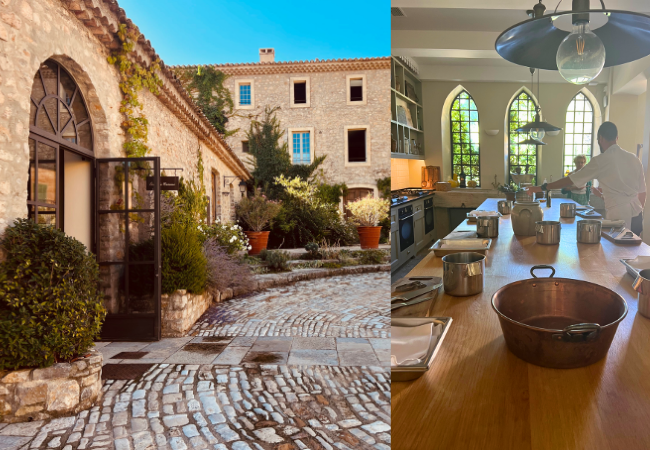Escape to a Gourmet Chateau
It’s not often you can take a cooking class at a luxurious, Michelin-starred French chateau without even being a guest. After a pleasant drive into the Var hinterland, between Lorgues and Flayosc, I arrive at the Chateau’s stone-pillared entrance as the morning sun spills onto a driveway that leads me through lush vineyards, green forest and terraced olive groves until the square tower of the Chateau de Berne comes into view.
Set in a magical 1,500-acre private estate, this unique manor farm-cum-chateau offers the ultimate escape. I am ushered through security gates where a handsome young valet offers to park my modest hire car with such charm that I already feel like a well-heeled visitor! Climbing the steps to the foyer I observe small groups of guests, fresh from their chic chateau suites, quietly consuming their breakfast under large green parasols enjoying resplendent views of unspoilt nature beyond the pool and Spa.
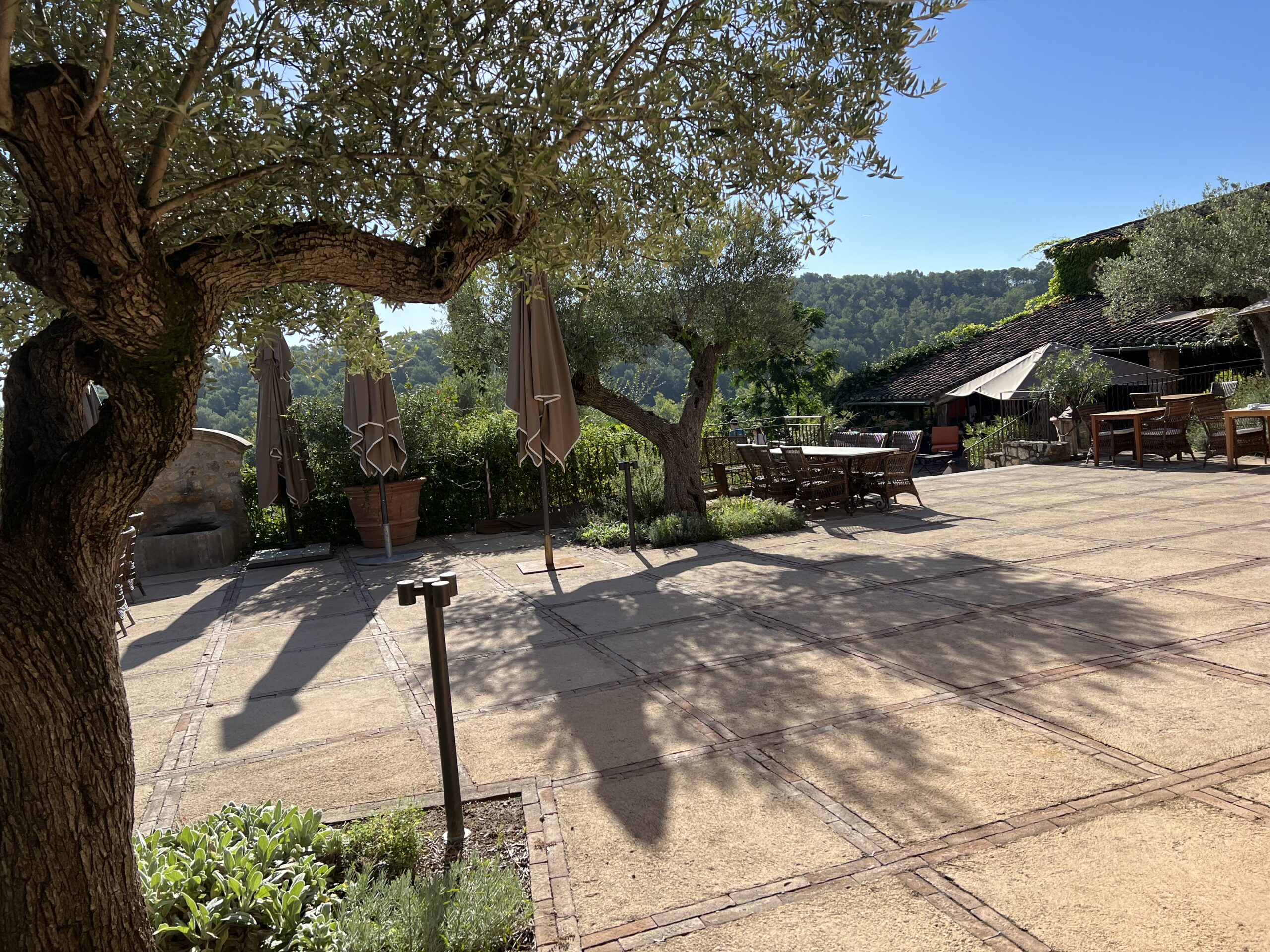
I am taken on a mini-tour of the Chateau, past its impressive wine cellars where wines are stored in square bottles to replicate the Chateau’s tower, and to the ‘Ecole de Cuisine’ which sits across the courtyard from the tower facing the fountain. Inside, the vast kitchen gleams with stainless steel stove tops and sinks rimming the long, central island where a multitude of cooking utensils hang from suspended racks. Cooking stations are set with aprons for each student as local Chef Aurelian Gabillault steps forward and introduces himself. He is much younger than I expected and speaks rapid-fire French with a ‘soupçon’ of English for the benefit of the lady from South Africa who is staying at the Chateau with her husband. The other two students are middle-aged Frenchmen, whose wives are being pampered at the Spa.
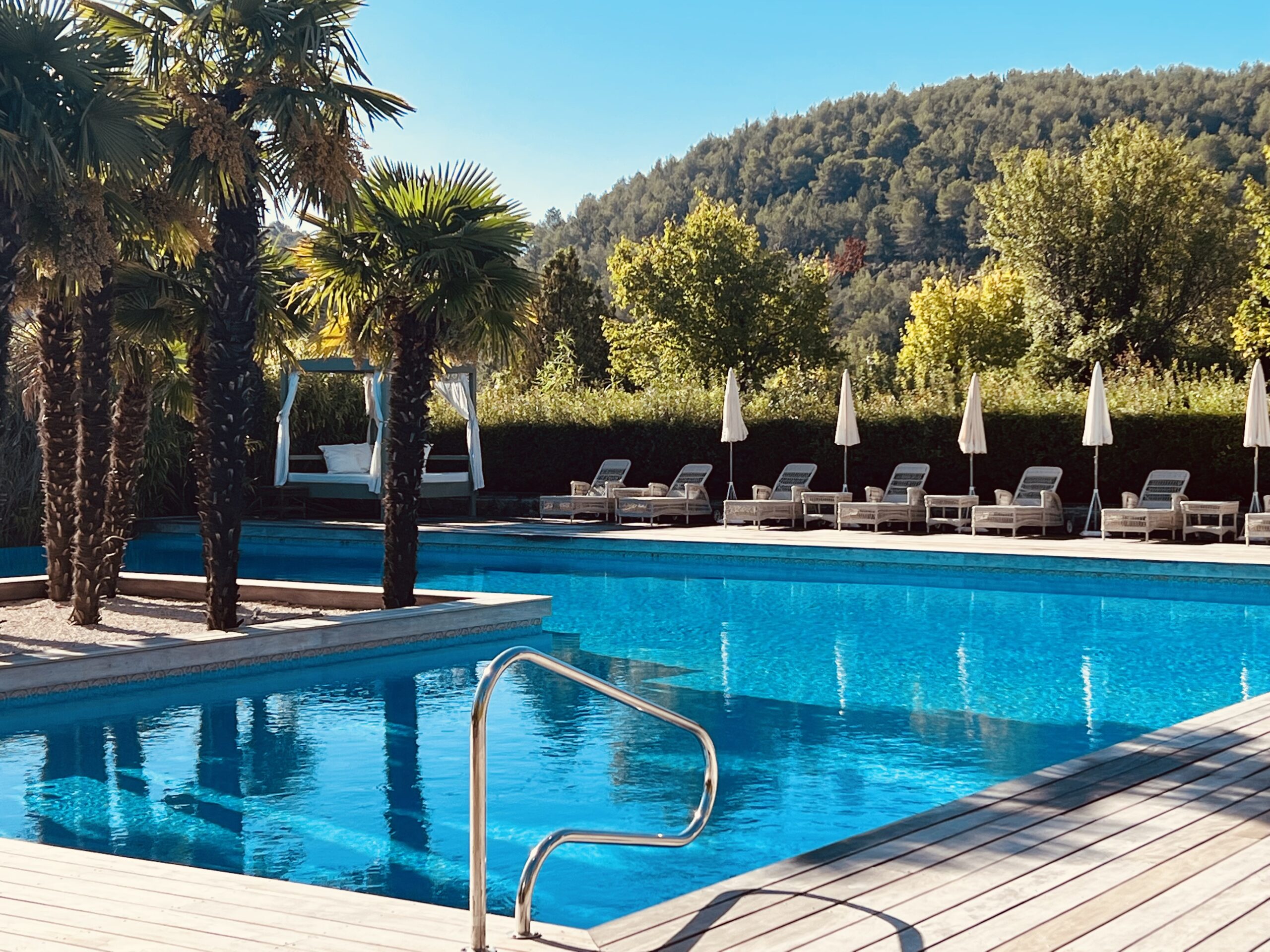
Cooking is a great leveller, and once we have briefly shared our varied backgrounds and French cooking experience, we eagerly don aprons and gloves and dive into the food preparation. Chef Gabillault has designed the lunch menu for us today, and we will be cooking:-
‘Tartare de Saumon’ (Salmon tartar), followed by ‘Loup de Mer’ (Sea Bass) served with baby artichokes and fish sauce, and finishing with a ‘Tarte au Citron’ (Lemon tart – provided by the main ‘Terrace’ restaurant). Courses will be paired with the Chateau’s wines.
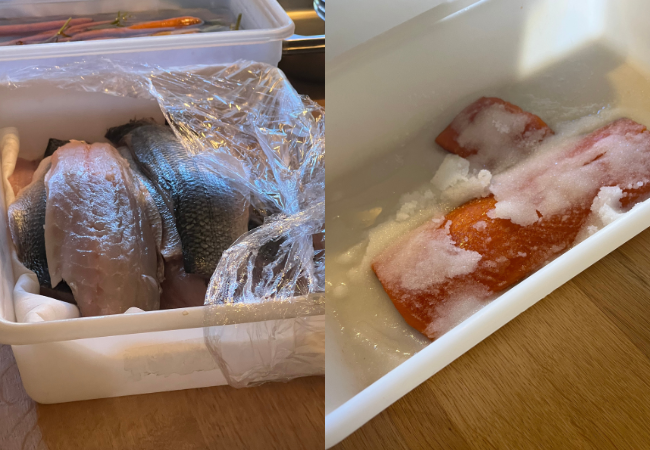
First, Chef shows us the fresh salmon we will be using for the Tartare which has been soaking in an equal amount of sugar and salt overnight in the refrigerator. We will soon be chopping the other ingredients to add to the Tartare.
At the back of the kitchen, a large pot already holds the ‘Le Fond’ or fish stock that Chef has prepared earlier. It contains de-boned fish, bits of meat, chicken livers, vegetables and white wine and needs to boil in water for an hour to extract all the various flavours. Later, the liquid will be strained before adding full cream and half a stick of liquorice, then reducing down. This will become the delicious fish sauce for ‘Le Plat Principal’ or main course.
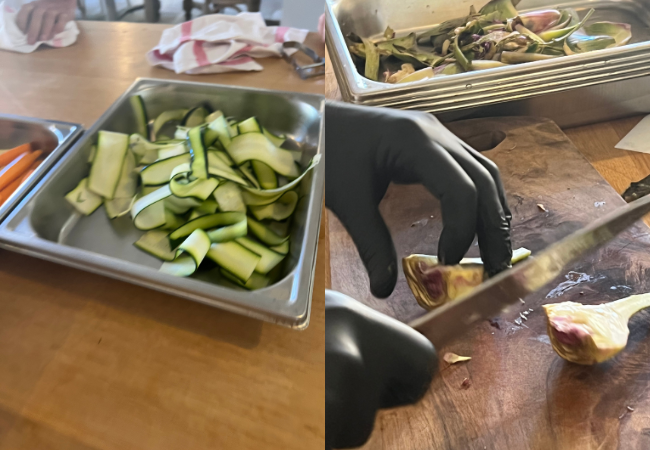
Back to the chopping boards, which are on damp pieces of kitchen paper to prevent slippage, we start to peel and slice zucchinis and carrots into long strips lengthways, keeping the centres aside. The slices are put into a large bowl of iced water where they will eventually change shape and curl ready to be used as food decoration!
To remove the skins of tomatoes, we first cut out the cores and score the other ends before placing into boiling water for a maximum of one minute. The tomatoes are then immediately plunged into a bowl of ice which prevents them from continuing to cook and helps preserve their colour. (Chef notes this is true of all vegetables when cooking eg. carrots). Once the tomatoes are chilled, their skins can easily be removed. (They and can be kept to dry out and makes tomato chips or crisps). We carefully cut the tomatoes into four, removing the pulp (very tasty in a vinaigrette), and slice them into small pieces to add to the salmon tartar.
Chef attentively observes us during each stage of cooking, frequently stopping to offer helpful hints. “When slicing”, he advises, “do not lift the knife edge too high off the chopping board, and make sure to tuck the thumb and fingertips in!”
We remove the wrap-around stalk of the fennel, slicing the bulb with a mandolin. Chef says to keep only the palm of your hand on top as you slice – no fingers! These fennel slices are added to the ‘chilling’ zucchini and carrots. We then slice washed celery sticks lengthways, removing their stringy sides before also adding to the iced water.
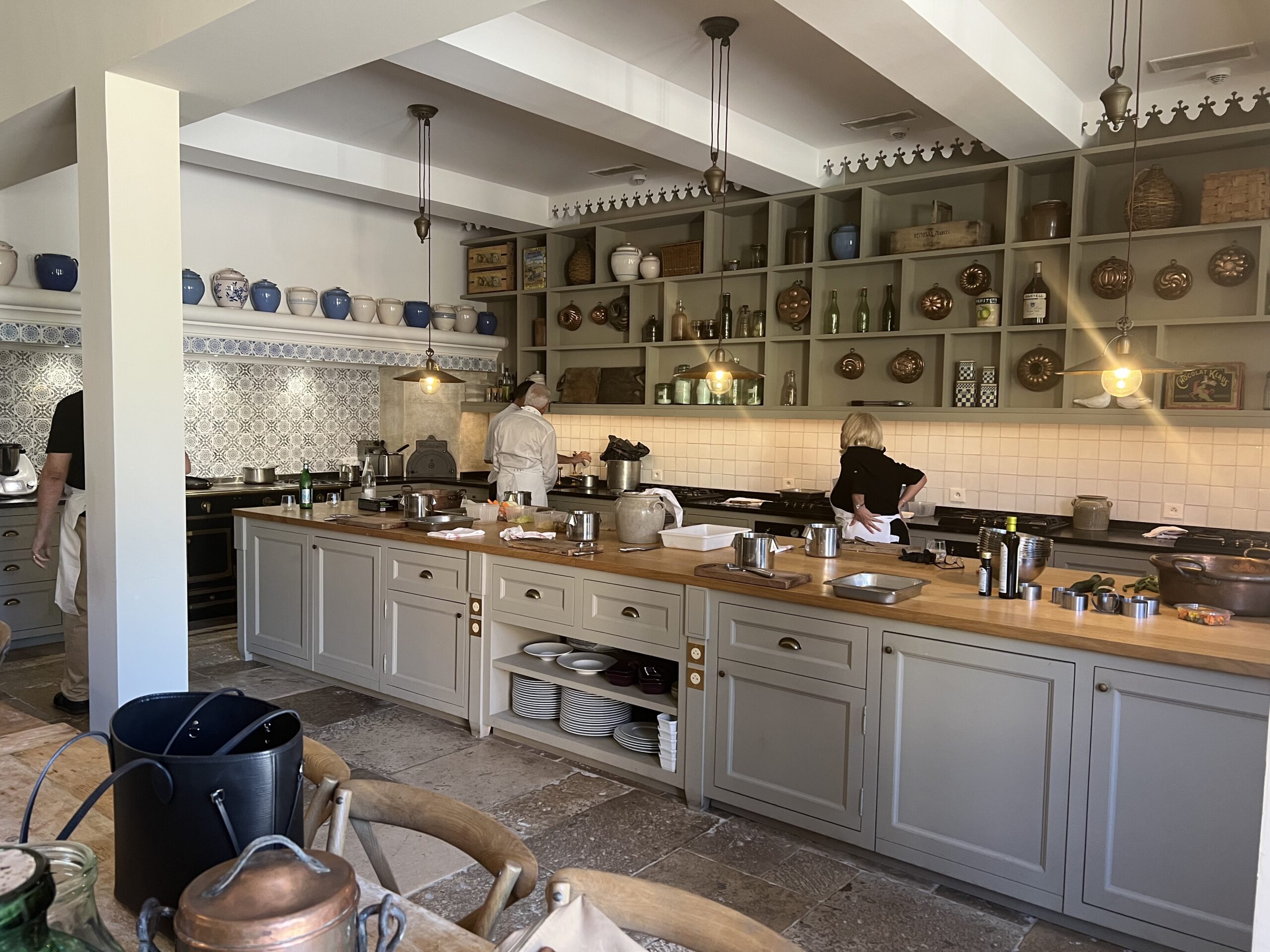
No salmon tartar is complete without a citrus juice, and Chef shows us a technique called ‘poele a vif’ – which is basically a method for sectioning a citrus fruit. Taking a lemon and using a small paring knife, he demonstrates slicing the lemon peel from the top down its sides removing as much of the tough, bitter plith as possible. Next he shows how to delicately remove the juicy fruit from each ‘segment’ by laying the lemon on its side and cutting from the outside to the centre as close to the membrane as possible, extracting the fleshy fruit. This is much harder than it looks and a bunch of lemons fall victim to our practice! Eventually, the collected lemon pulp is kept aside for the Salmon Tartar.
…Just time for a quick glass of Chateau wine before we continue!…
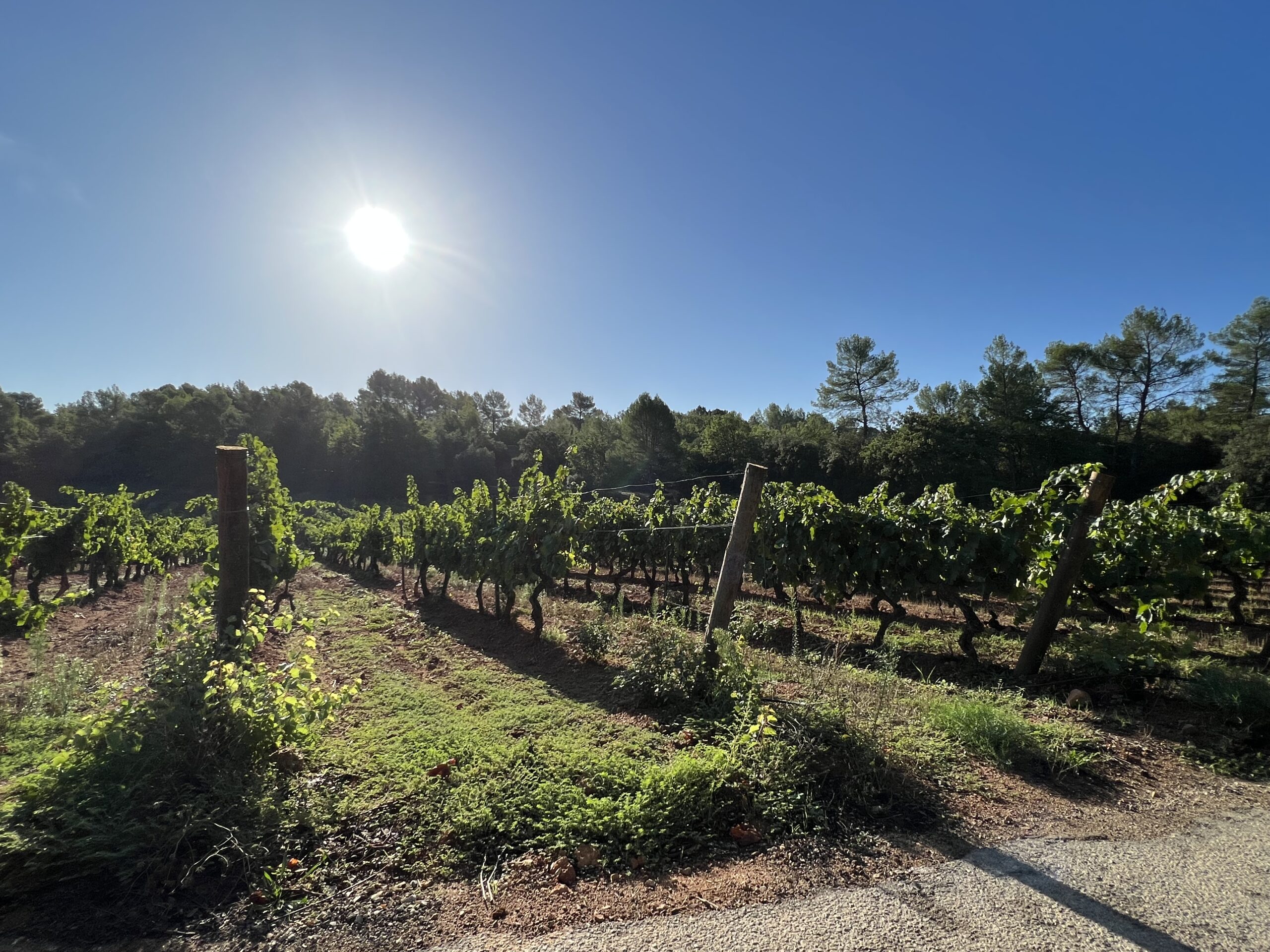
Artichokes are generally not easy to buy unless in season, and cooking them can be tricky. Chef shows us how best to prepare them – a fiddly process! First, peel off all the outer leaves, and then trim the stem right down to about an inch long. Trim the artichoke itself of any tough, outer rind. Cut the artichoke in half lengthways and then remove the ‘fuzzy’ centre or ‘choke’. Now you are left with a relatively small vegetable from what you started with! Chef adds freshly-squeezed lemon juice then inserts the artichoke pieces in a single layer into boiling, salted water (just enough to cover the artichokes), covers the pan and leaves for 20-35 minutes (or until a leaf is easily removed). He notes that you can also steam the artichokes but he prefers to keep their flavour by boiling in the water. The cooked artichokes are to be served alongside the Sea Bass, with a dash more freshly squeezed lemon juice!
For the ‘Tartare’, we get peeling and slicing again – cucumbers lengthways, removing the middle ‘pulp’; the green stems of spring onions; celery stalks and add the sliced tomatoes we de-skinned earlier together with some finely chopped coriander; the fresh lemon pulp and some grated lemon zest. We remove the salmon from the refrigerator and wash the sugar and salt off thoroughly before chopping the salmon into small pieces to add as the main ingredient for our ‘Tartare’. We then each plate up a serving by filling a hollow round baking shape with the tartar mixture, carefully removing it and decorating the tartar with some of the ‘chilled’ now curly cucumber, carrot and fennel slices. As a final touch, Chef hands us some pretty yellow zucchini flowers. Our ‘Entree’ is ready!
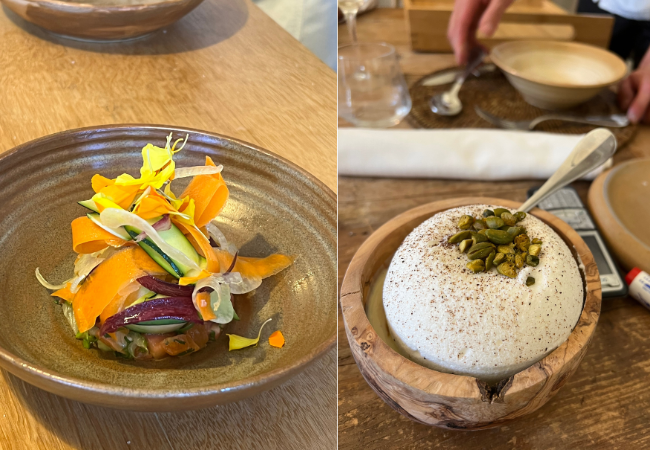
Now to cook ‘Le Plat Principal” or main course – Chef uses grapeseed oil which he declares is better for frying fish as the oil must be hot! Olive oil boils at around 150 degrees centigrade and burns quickly, he says. He places the filleted sea bass pieces, skin down, into the hot oil and we watch as the bottoms begin to whiten as they cook. Chef advises never to touch the fish during cooking so it retains its natural colour!
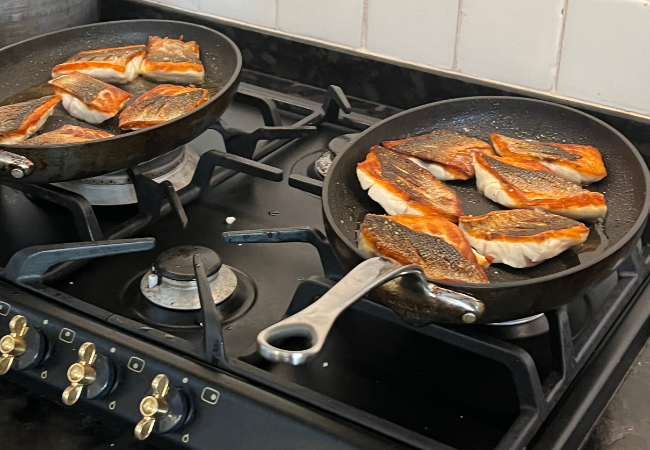
The ‘Loup de Mer’ fillets are soon done and Chef starts to plate up with the artichokes, carefully pouring some of the prepared fish sauce around the fish – never over the crispy top!
Et Voila! ’A table’ to relish a gourmet lunch prepared by a band of keen cooks in an exquisite Chateau, where the wine and relaxed conversation soon flows as partners arrive to share the feast. Merci Chef!
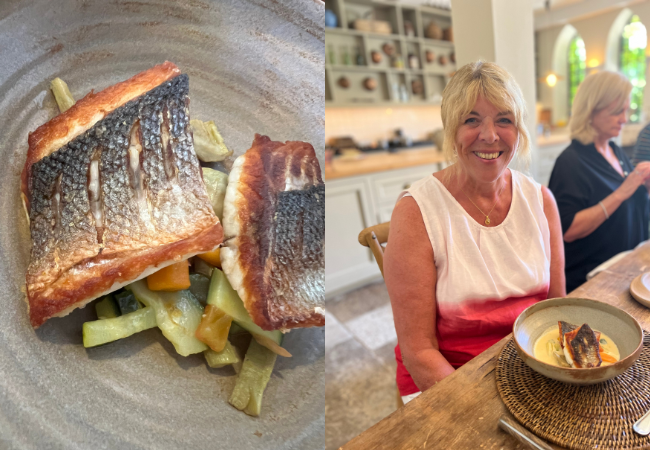
Looking for more French food and drink?
Taste of France is the ultimate online destination for French food enthusiasts! Dedicated to bringing you the best in French cuisine, featuring a wide variety of delicious recipes, the latest food news, and virtual tours of the most renowned culinary regions in France.
Share to: Facebook Twitter LinkedIn Email
More in Food and Drink, Provence-Alpes-Cote d'Azur
